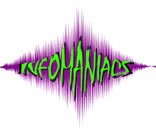 |
 |
|
|
|
|
|||||||||||||||||||||||||||||||||||||||||||
|
|
||||||
|
VIRTUAL REALITY IS STAKING ITS claim on the World-Wide Web, and it promises to make today's graphical user interfaces as obsolete as the command line. Imagine logging onto a home page on the Web as you usually do. You click on Adventure in Travel and your view of graphics and text is replaced with a 3-D scene of a travel agent's office. Navigational controls move you forward, backward, left, right, up, and down. As you move in to take a closer look at a poster of a posh resort, you find yourself catapulted to that very destination, complete with gurgling fountain and swaying palms. This is the Web in 3-D. The technology behind such an experience works like this: Your Web browser, say Netscape Navigator,is configured to trigger a helper application under certain conditions, much as audio and video players are configured. By choosing a Web address that has 3-D content, you automatically launch a 3-D browser on your computer. The server downloads a specially formatted ASCII file (a 3-D world description file) that the browser interprets. Once you're in the 3-D home world, clicking on hot spots triggers downloads from the same server or from a server in a different location. To reduce the time delay as you switch locations, the 3-D Web world description files are smaller than many of the bitmaps that shuttle across the Web today. Several Web virtual reality projects are underway. VRML 1.0 (Virtual Reality Modeling Language) is a subset of the Open Inventor file format pioneered by Silicon Graphics Inc. As an open, published standard, VRML is serving as the basis for commercial 3-D browsers, authoring tools, and content. WebSpace--a 3-D browser based on VRML and the OpenGL rendering language--is the offspring of a partnership between SGI and Template Graphics Software (TGS) of San Diego. TGS also offers Open Inventor as a cross-platform toolkit for programming VRML worlds and custom browsers. SceneCreator, due in June from TGS, is designed to let nonprogrammers create their own VRML worlds. Other developers are also spearheading development of 3-D Web worlds. Intervista of San Francisco, an offshoot of The Community Company founded by Mark Pesce, the father of the VRML movement, is at work on Worldview. This VRML browser differentiates itself by rendering worlds with RenderMorphics' RealityLab, recently acquired by Microsoft. VREAM, based in Chicago, has developed WebView, a browser that interprets VRML worlds as well as worlds created with the company's VRCreator virtual reality software, currently in beta. At the heart of a VREAM world is the scripting language VST, which enables user interactions to be linked easily with world behaviors. VREAM plans to offer a range of tools for both world consumers and programmers. UB Networks, formerly Ungerman Bass, is taking a different 3-D road to the Web. Based on its primary business of producing industrial strength networks, UB Networks is seeking to provide robust, fault-tolerant 3-D worlds in turnkey form to organizations. All real-time 3-D graphics are subject to a tradeoff between graphics quality and interactivity. While most developers are focusing on graphics quality, UB Networks is choosing high levels of interactivity. Upon entering a UB World, you select an avatar--an animated 3-D humanoid figure--to be your virtual self. As you explore, you may encounter other avatars that represent other users on-line. You can even stop and chat with them by typing. Beyond CAD models, product designs, and 3-D depictions of travel destinations, there's a realm of data and knowledge that can be communicated only through three-dimensional metaphors and experiences. PC Magazine June 13, 1995 Copyright © 1995 Ziff-Davis Publishing Company To
Contact the authors send mail to
info@infomaniacs.com
|
|||||||
By
Linda Von Schweber
& Erick Von Schweber
Copyright
1996-2004 by Infomaniacs. All Rights Reserved.
Updated January 25, 2002